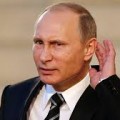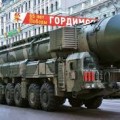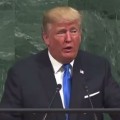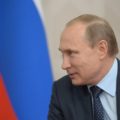The fundamental underpinnings of the contentious relationship between Moscow and Washington will not change anytime soon.
The Bolshevik takeover of the Russian Revolution resulted in a government that saw human rights, the central concept of the West, as a serious impediment to the will of the state and the implementation of the Communist system. Vladimir Putin is a product of the worst portion, the KGB, of one of the most brutal governments to ever exist. He describes the fall of the Soviet Union as “the greatest geopolitical catastrophe of the century.”
That’s a telling comment. It’s not the Holocaust that killed six million Jews, or the devastation of World War II, or the 50 million destroyed by Mao Tse-Tung, but the fall of an empire that intentionally starved to death 25 million of its own people, enslaved half of Europe, and had allied itself with Adolf Hitler that ranks, in Putin’s mind, as the greatest tragedy. The ideological differences between the current leadership within the Kremlin and that of the West will not be compatible or peaceful so long as Putin or his allies remain in power. Moscow has continuously sought to interfere in Western politics since the Communists first took power over a century ago.
Putin came to power at a time when Russia had few security concerns. China was no longer a rival. Both nations were and are working together to replace American influence. Their geopolitical goals are largely in synch with each other. The armed forces of both The United States and its European allies were a shadow of what they had been at the end of the First Cold War. Much of the forces held by the European nations were only paper tigers, with ships, planes, and tanks in serious disrepair. A significant portion of America’s reduced, remaining military strength was exhausted and overused from two wars in Iraq, and the ongoing conflict in Afghanistan.
The Obama regime made dramatic gestures of peace. The NEW Start treaty negotiated by the former President, Secretary of State Clinton, and their Russian counterparts gave Moscow, for the first time in history, the lead in nuclear armaments. Secretary Clinton even approved the sale of uranium, the basic ingredient in nuclear weapons, to Russia. Obama’s administration (and Congress) cut the U.S. defense budget, and even withdrew all American tanks from Europe, an act unprecedented since the end of the Second World War.
Putin’s response was extraordinary. As America and the West cut their defenses, Putin, despite his nation’s faltering economy and the absence of any threats, substantially strengthened his armed forces. He reintroduced medium range nuclear missiles to the European theater, violating an accord banning them signed by Reagan and Gorbachev in the 1980s. His dramatic military buildup features offensive weapons, including advanced submarines that threaten Atlantic shipping, and exceptionally powerful long range missiles with warheads more powerful than anything else in existence. He has returned to meddling in Latin America, particularly in Nicaragua, where he has built nuclear bomber bases and provided tanks and other armaments.
Putin has returned to the Cold War tactic of sending manned, nuclear bombers to fly just off the east and west coasts of the United States.
And, of course, for the first time in over seven decades, he authorized the invasion of other European nations, including Georgia and Ukraine. Putin now is undertaking threatening moves against Latvia, Estonia, and Lithuania.
Talking is always better than fighting. It makes sense for the leadership of the United States and Russia to meet and keep the channels of communication open. There should be, however, no illusions of just what Putin’s dangerous intentions are, or his willingness to undertake any measures to reach his aggressive and hostile goals.
Frank Vernuccio serves as editor-in-chief of the New York Analysis of Policy and Government.

















Follow Us